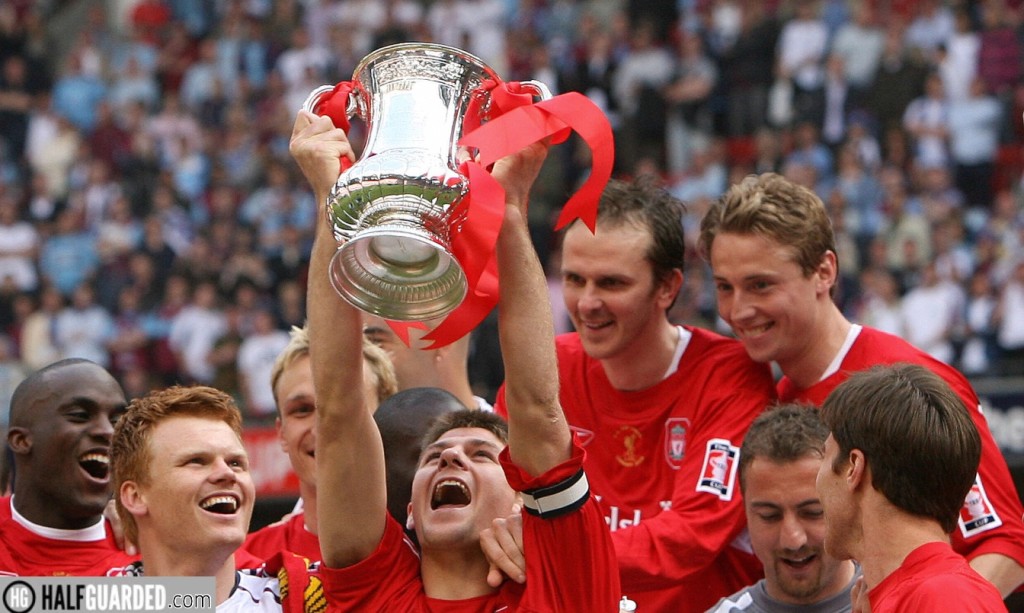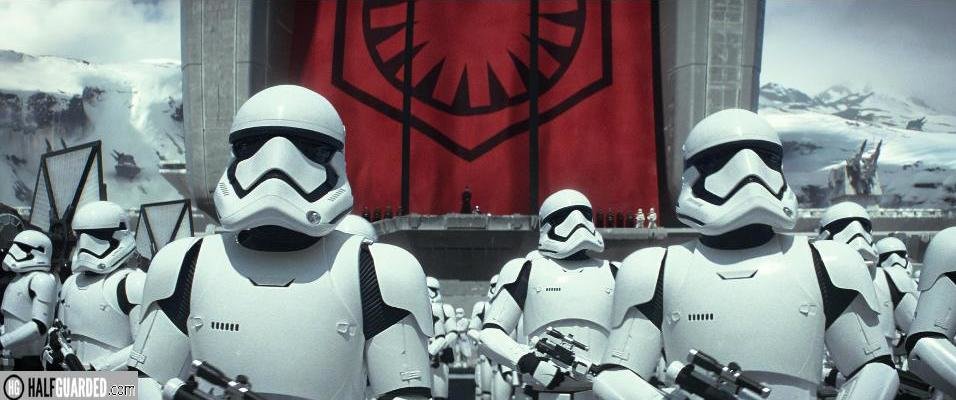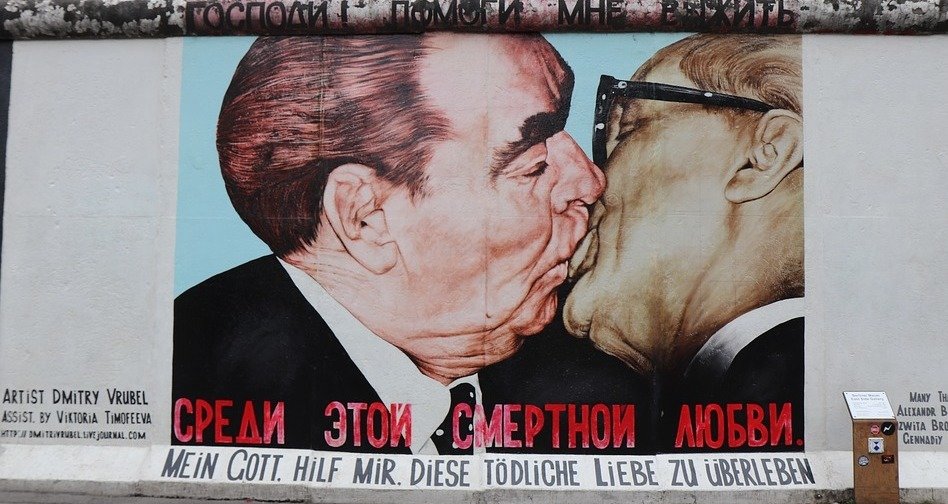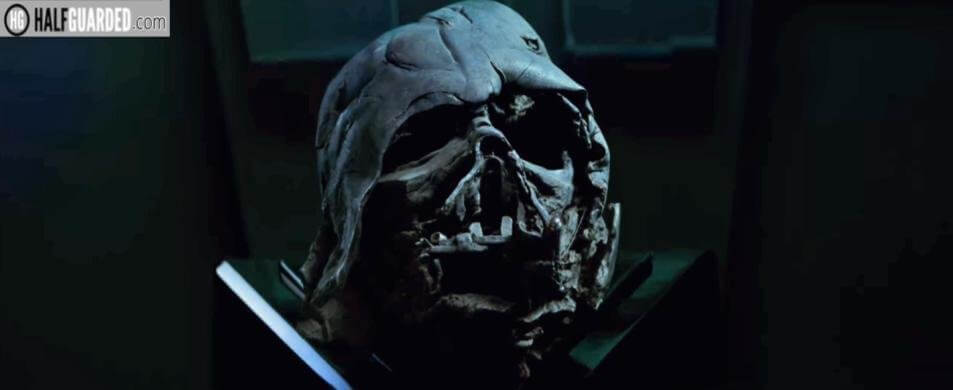“You do know it’s all staged?”
These are the heart breaking words spoken to me by my mum when I was six years old. I’d just been enthusiastically telling her about the awesome display of sporting dominance I’d witnessed on the telly, where Big Daddy had easily beaten a masked guy and thrown him around the ring with amazing ease. I was gutted, I rarely watched sport at that age (although I did have a weird fascination with the Grand National horse race) and thought I’d found one that I really become a fan of.
It often fell to my mum to break bad news to me growing up. She was the one to tell me there was no Father Christmas (sorry kids it’s true), that a large bunny didn’t actually deliver those chocolate eggs at Easter and that Farrah Fawcett was leaving Charlie’s Angels (that was a tough one, though she was quick to tell me that another pretty blonde was replacing her before I could burst into tears). Now she was almost destroying my love affair with professional wrestling before it had even begun.
But continue to watch I did, because while it made sense that the Big Daddy antics were not on the level most of the other matches I would watch seemed like genuine contests. The style back then was very much catch as can, with matches built around fighting to apply holds or struggling to defend against them. There were of course the villains who would try to take short cuts by delivering an illegal punch while working his opponent in a headlock. There were also the giants who would work a more methodical brawling style. In all cases the action was subtle and understated and to someone like me who had never seen a real fight (until the day I saw a gang of football fans battling outside a pub while I was on the way to a library, yeah I was such a tearaway kid), it all looked plausible to me. I mean I knew something wasn’t on the level, I wasn’t a complete idiot.
My confusion would have been compounded as the Wrestling was on the Saturday sports programme World of Sport, ITV’s alternative rival to the BBC’s flagship show Grandstand. Wrestling enjoyed a traditional spot around 4 o’clock, perfect time for people just arriving in from the weekly shopping while awaiting the football results to come in. ITV’s coverage of the FA Cup final would also feature a special show, normally headlined by a big grudge match or a tag team match (which were seen as a rare special attraction).

Ratings were big with the Saturday afternoons drawing 8 million during the 70’s and the Cup final day shows reportedly more. However since viewing figures are sketchy there had been some exaggerations. What should also be noted is that the UK only had three channels in those days, so it’s not as if there was a great deal of choice. However this shouldn’t draw away from the popularity of wrestling in those days, as live attendances were very strong and thousands of shows a year would take place.
I personally only remained an occasional viewer. I’d missed a lot of the glory days. I was too young to have seen the legends Jackie Pallo and Mick McManus or their epic grudge match on the 1963 FA Cup final day (a match which legend has it drew more viewers on ITV than the final itself, however since the final was on both BBC and ITV viewers would have been spilt). I missed Adrian Street’s flamboyant, effeminate persona which was an instant heat getter in front of the predominately rough, working class crowds in the 70’s (Britain was hardly open minded in those days, with homosexuality only decriminalised in 1968).

Then in the mid 80’s my interest exploded for reasons that I wasn’t really aware of at the time.
World of Sport was axed in 1985, however the popularity of wrestling ensured it survived in it’s own show which would soon be moved to a mid day spot. Up to this point all television wrestling came from the promotion known as Joint Promotions. Joint promotions began life as an alliance made up of local promoters from around the country, much in the same way as the NWA that dominated the US scene. Joint controlled the British titles, shared talent, worked together against outside promotions (such as Jackie Pallo’s attempt to start his own breakaway group) and pretty much control the wrestlers and make sure they had as little leverage as possible.
In the mid 70’s the ageing promoters sold Joint and the direction of the company ended up in the hands of promoter Max Crabtree, who’s idea was to build around one star. A wrestler who just happened to be his own brother Shirley Crabtree. The blonde, bodybuilder Shirley of the 60’s had been a British champion for Joint’s rival BWF group, however he’d been practically run out of the business by the group’s previous star Bert Assirati, a feared legit shooter who would make a nuisance at shows and challenge Crabtree to fight for real (though some of this story may been exaggerated to increase Assirati’s legend while demeaning Crabtree’s reputation).
The Shirley Crabtree that returned in the 70’s was overweight, in his 40’s and could do very little in the ring. However Max teamed him with another behemoth Giant Haystacks and repackaged him as Big Daddy. While initially a heel, he began to gain a fanbase when he entered into a feud with another of the top heels the masked Kendo Nagasaki (heel vs heel matches were a common attraction in British wrestling).
Big Daddy was on the losing end of these matches with him being pinned in the third fall of their last televised match (most contests were 3 fall affairs, with the popular “two falls, two submissions or a knockout to decide the winner”), but not before he ripped off Nagasaki’s mask. It’s a memorable scene as Nagasaki with his spooky red eyes was even more terrifying without the mask, sporting a long ponytail, a bizarre half shaven head with a tattoo on his forehead, the guy looked freaky as hell.
The unmasking was something wrestlers had been trying for years (it was a popular tease as wrestlers would succeed in getting the mask just above the mouth) and set Big Daddy on the way to being the company’s big hero. Now as a good guy or “blue eye” (the term in America is “babyface”), Daddy’s matches devolved into farcical matches that had a circus clown quality about them. He rarely gave opponents any offence with the story of the match being the villains charging at Daddy and bouncing off his giant belly, while he lead a chant of “EASY, EASY”.
Pure wrestling fans may have been disgusted but the act got over with family audiences, particularly with young children who loved the fat fucker (it wasn’t reciprocated as Daddy reportedly hated kids and couldn’t bear to be surrounded by them as he walked to the ring). He pretty much took over the coveted FA Cup final spot, mainly in tag matches where a younger wrestler could carry the workload for the team. His 1981 feud with former partner Giant Haystacks had a natural dynamic that draw a crowd of 10,000 to Wembley arena and sent the crowd into raptures at Daddy’s victory despite the match only lasting 2 minutes and ending on a countout (although a finish like that wasn’t considered the ripoff it is today).
Daddy was promoted as the top star of wrestling and was fed a steady stream of villains to surrender their dignity and lay down for his “big Splash” finisher. Fans may have been satisfied but the wrestlers in the locker room were not and soon realised if they were to move upwards were going to have to go elsewhere. Some like Dynamite Kid went to ply their trade overseas in Japan and Canada. Other’s jumped ship to a new promotion called All Star Wrestling created by Brian Dixon. Despite not having television Dixon was able to steal away some of Joint’s unappreciated talent, especially their champions such as Marc Rocco, Wayne Bridges, Johnny Saint, Joe Quinn, Chic Cullen, Tony St Clair and a returning Kendo Nagasaki.
As All Star’s roster swelled with the better workers the exclusive television rights of Joint’s contract ran out in 1986 and from that point on the lunch time wrestling would feature shows from both promotions as well as the occasional special show featuring the WWF. (Originally the WWF was to feature every other week, however that idea was quickly scrapped and would appear only a couple of times a year. The first show was a stormer with Madison Square Garden matches with the Harts vs The Bulldogs and Hulk Hogan vs Randy Savage in a lumberjack match, so possibly the UK didn’t want the American shows to overshadow their own. The international version of WWF wrestling Challenge show did appear in the early hours in some ITV regions. My region, Yorkshire didn’t air it, neither did we get Battlestar Galactica. It was fucking hard growing up in Yorkshire I tell you).
The first show from All Star aired on the first week of 1986 and this is the point where I went from being a fairly regular viewer to an avid, obsessive fan. The show was kicked off with a singles match with Fuji Yamada, who later would become Jushin Thunder Liger and followed by someone who would become my absolute favourite Marc “Rollerball” Rocco. Rocco was one of the few UK wrestlers who could cut anything resembling a promo, yelling like a madman at the camera about how he was going to tear apart his opponents. He was also tenacious in the ring, vicious like a bulldog and even though he was a bad guy I quickly became a fan.

The main event was between Nagasaki and Ironfist Clive Myers in the bizarre concept of a disco ladder match. Why a disco match? I don’t know. For some reason half way through the match the ring was enveloped in a disco light display, but oddly a high tempo but distinctly classical themed anthem started playing. Since neither were champions the object hanging from the ceiling was a golden disc. As weird as this was the sight of Nagasaki pushing the ladder over and sending Myers flying out of the ring was a stunt I’d never seen before.
This show was typical of the excitement All Stars was built around. The action was fast paced and in the months to come I would see more of the best of UK talent on their shows. Like Johnny Saint who was one of the most graceful wrestlers I had ever seen, even as a newish fan I could tell that there was something special about him. Doing even the simplest of wrist locks looked like a smooth artist at work.
Soon to join All Stars was Dave Fit Finlay, a great loud mouth heel who I had previously seen feuding with Big Daddy on one of the Cup Final shows. Finlay was (and still is) a fantastic tough bully style grappler, but his act was made all the memorable as he was one of the few wrestlers to have a valet with him, “Beautiful” Princess Paula. Women matches were banned from television, but Paula made her mark regardless. A striking figure with her signature Indian head dress, she had a cocky swagger reminiscent of America’s Sensational Sherri. The two were a great double act (actually husband and wife at the time) especially when Finlay was on the losing end of a match and she would go into a rage, screaming at the crowd and taking her frustrations out by smacking around the poor ref and sometimes even Finlay.
Most people were probably unaware and cared little they were watching shows from two different promotions. The clues were there, as the rings looked very different, All Stars had a bright red, white and blue design and whenever I saw that at the start of the show I always knew I was going to get a faster paced more exciting set of matches.
Nothing got me more excited than when Rocco was on the show. Probably the greatest match I ever saw from this period was a thrilling World Middle-Heavy Title fight with Yamada, which had the crowd riled up like I’d never seen on a British show. It really is one that you should go out of your way to see, and when I say go out of your way to see I mean type in Rocco and Yamada on youtube.
Rocco was also involved in one of the few feuds on UK shows that had an actual storyline. All Stars built their shows around the heels Rocco and Nagasaki and it was only fitting that Nagasaki’s manager and mouthpiece “Gorgeous” George Gillete put the two together in a superstar tag team. They were able to win their feud with the “blue eyed” team of Myers and Yamada, with a brutal piledriver double team spot. It all unravelled in early 88 in a match with Clive Myers and Dave Taylor where a double team spot from the heels backfired and led to Nagasaki losing his mask and the match. As simple as all this was I was in awe as Rocco and Nagasaki broke up in the ring and screamed challenges at each other (will Gillette did the screaming for Nagasaki).
I couldn’t wait for the showdown that came in a tag match with Rocco playing a rare “blue eyed” role teaming with Wayne Bridges (who also had a grudge with Nagasaki from losing his “world title” to him the previous year) to take on Nagasaki and Psycho Stevens. The match was a heated affair (Nagasaki matches always had a unique atmosphere as he often had his fanclub in attendance, who were frankly some of the weirdest looking fans and I’ve been to live Darts) and it told a great story, with Rocco and Bridges beating the shit out of Stevens and forcing his arm over to Nagasaki to demand the man they actually wanted to tag in. A true heel Nagasaki would only tag in when his team had the upper hand. I loved this match, but the one I really wanted was a Rocco Nagasaki singles match which sadly never happened on the telly.
In comparison to all this action the Joint shows were looking very jaded, relaying on the big, lumbering giants. That’s not to say there wasn’t great action to be found. There was great wrestling provided by the likes of Marty Jones and future WWF legend Steve Regal (although Regal would also jump to All Star and would be involved in the notorious angle where Nagasaki hypnotised his partner Robbie Brookside forcing him to turn on Regal). Joint would also put on a yearly eight man Battle Royale, normally dominated by Haystacks and was a highlight of the UK wrestling calendar.
However when the promotion went back to building a return feud between Daddy and Haystacks it was clear they were caring little about building future stars. The only wrestler to break through was 6 foot 5, “Bomber” Pat Roach, who after 25 years of wrestling had finally become a main eventer on the back for his role in the hit show Auf Widersehen Pet.
One thing the two promotions did share was a man who was just as important to the show as any wrestler, a man who any fan of that era will remember with affection and a man who gave UK wrestling a degree of respectability and authenticity.

That man is the Commentator Kent Walton.
Walton was our Lance Russell, our Gordon Solie, our Ed Whalen, our Jim Ross. In his own way he was as great as all of them.
Walton would start each show with “Greetings grapple fans” and end it with “Same time next week.” His thick, powerful voice was perfect for the earthy, working class setting of British wrestling. He would call the action with a calm style that complimented the methodical form of British grappling. There was a psychology to his announcing, pacing himself to match the flow and tempo of the contest. When the wrestlers were in a hold, his voice could drop to a husky whisper as he explained the workings of the moves and transitions and in something that would be alien to the announcers of today when nothing was happening he’d remain quiet. As the pace of the match began to quicken and the moves began to come together he would raise his own tempo, talking faster in synch with the action in the ring and raising his voice as he sensed a fall about to be won. After which he slipped back into calmly taking through the replay.
Walton called the action straight and gave the sport a legitimacy in the arguments of “is it real?” He was a commentator not a performer and would rarely take sides. When rulebreaking occurred he would more likely blame the referees for not doing their job. For Walton the biggest sin in a wrestling match would be when it descended into brawling, where he show his disapproval with understated true Britishness with comments like “This is really unnecessary” or during a four man brawl he’d insist “This is quite ridiculous.”
Several years ago Kent Walton took his place in Wrestling Observer’s hall of fame, a rare achievement for those from the World of Sport era and something that I took great satisfaction from. Walton’s voice represented a great era that catapulted my passion for wrestling, a pursuit that would change the course of my life in many, many ways.
The New Generation was THE NEW GENERATION
Sadly that era of British wrestling was to come to a close at the end of 1988. Ratings were still in the millions but were falling, while ITV controller Greg Dyke wanted to modernise the station and the dimly lit, rough presentation of wrestling was seen as a relic of the past. The final episode of wrestling on ITV was a highlights show from the sport’s 30 years on the station, narrated by Kent Walton. Rather strangely it was not Walton who got to say the final word on the show, but an impassioned speech in the ring from Pat Roach calling it a sad day for television and wrestling (although Roach did acknowledge Walton’s at ringside and noted his many years of service). And as the screen went blank I felt a chill as Rocco, Nagasaki, Haystacks and all the rest disappeared from my Saturday’s forever.
In the following year it would be WWF that people would come to think of when you mentioned wrestling in the UK, as a totally different audience than had watched the grunt and groans took to watching on the new satellite Sky network. There was a boom in interest in wrestling as any channel on the Sky network were buying old tapes from promotions such as USWA, World Class but there was no home for the British promotions as the channels refused to pay thousands for new UK shows when they could get American tapes far more cheaply.
Joint and All Stars remained popular and survived as touring companies based around the stars from the cancelled TV shows. However without television to build new stars interest ultimately waned and British wrestling resorted to incorporating such dubious tactics as WWF “tribute” style acts, as well as flying aged, former WWF talent into it’s shows.

Ironically in the 90’s ITV brought back World of Sport and which once again included wrestling. However it was not a return to British wrestling but American WCW shows which were heavily edited to excise any scenes that were deemed too violent for midday television. As such the shows were a complete mess, baffling viewers with matches clumsily cut apart so severely that many aired missing their conclusions. (WWF’s attempt to invade terrestrial TV met similar problems, as their first show on the normally edgy and provocative Channel 4 just happened to be the Royal Rumble show with the infamous Mae Young flashing incident. Any plans to keep the relationship ended right there.)
The 2000’s did see a resurgence of sorts, with a rise of independent promotions adopting an Americanised approach. Many thrived for a time, bringing in talent from DVD trading based indies from America to mix with the home grown wrestlers who’d grown up watching the American and Japanese styles. Amongst those with grand designs to bring back the glory days was the FWA and with a spot on Talksport radio and a one off show “Revival” airing on the Bravo channel, seemed to have a lot of potential to do just that. Yet despite some excellent shows and a rabid cult following there was a ceiling of how many fans such a promotion could really draw and while faring better than most ultimately closed it’s doors when the money paying to run shows greatly exceeded what it drew at the box office.
Fortunately there is still a British wrestling scene today. There are promotions and stars (Grado!) that enjoy a cult following and the roots from the World of Sport era are still there. Ricky Knight is one such promoter who has taken a sensible approach to the growth of his WAW and has a healthy business to show for it and more than any group retains the spirit of the British style.
Britain made it’s mark in the history of wrestling. The skills of Dynamite Kid, William Regal, Dave Finlay and Marc Rocco are well respected around the world and have become legendary amongst fans, wrestlers and historians. The overall style has become popular in independent promotions all over America and the Internet has seen a new generation of grapple fans rediscovering what’s been dubbed the World of Sport era.
Well I was there at the time….and it was glorious.
Til Next time.
Dazza















Comments 2